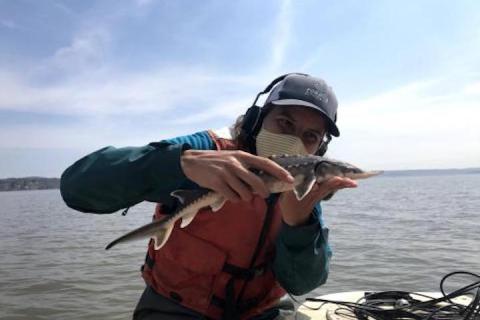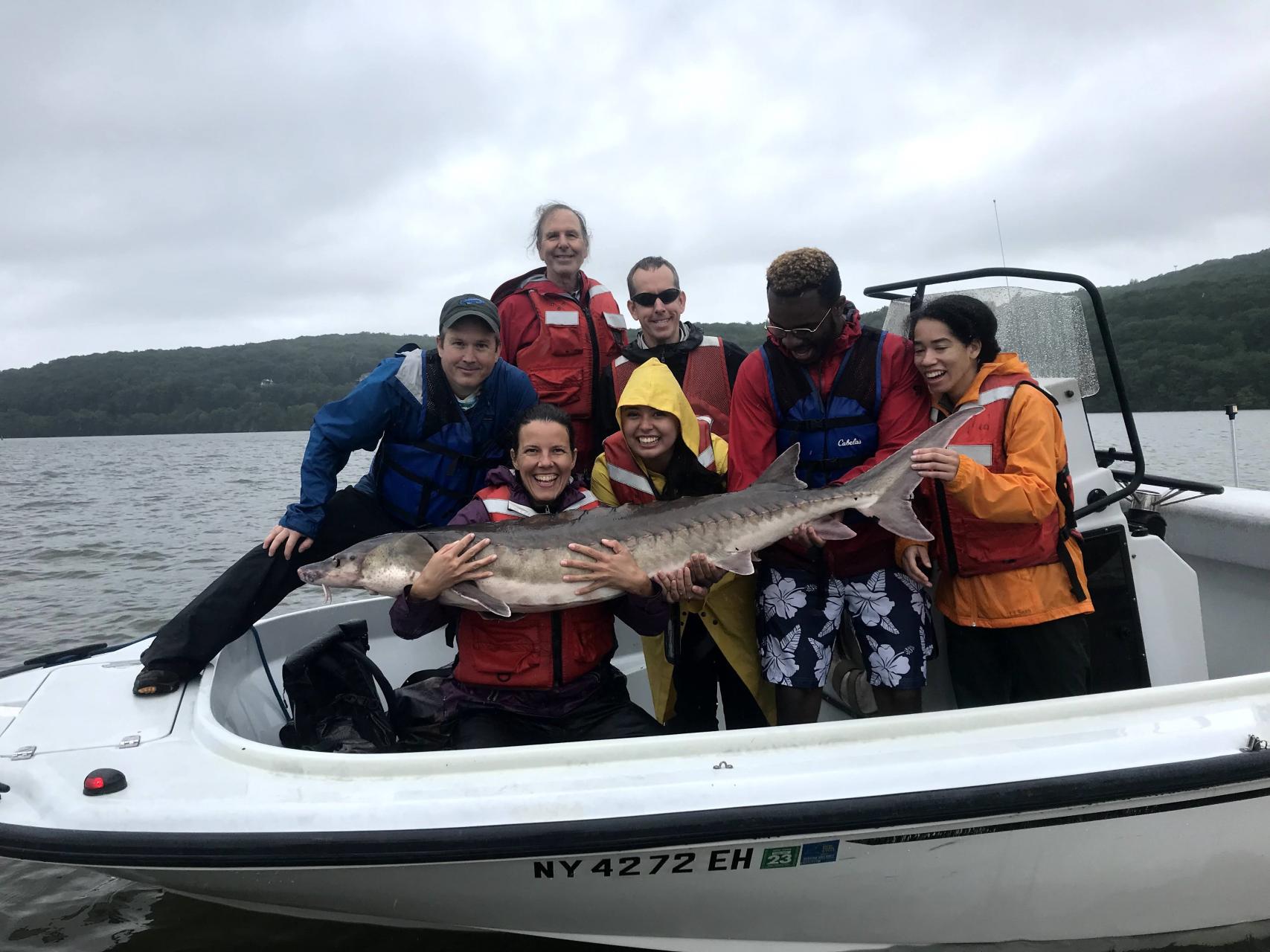
In a close collaboration between the Cornell Lab of Ornithology, Hudson River NERR, West Point, and NYSDEC, this project will implement passive acoustic monitoring to evaluate how fisheries species use the reserve and to provide acoustic resources for education.
The waters of the Hudson River NERR are routinely used by fish species that provide valuable ecosystem services and galvanize river conservation engagement and efforts. Though these managed fisheries species seasonally use reserve sites, the where and when are unclear, with high uncertainty around habitat usage and phenology. To supplement ongoing traditional survey methods, reserve researchers and New York State Department of Environmental Conservation fisheries managers have expressed the need for non-invasive techniques to estimate the distribution, activity, and population abundance, with one opportunity being recent conservation technology.
This project will implement a passive acoustic monitoring effort to target information gaps on the link between spawning distribution and abundance by Hudson tributaries and habitat types. Non-invasive monitoring techniques will complement existing physical and chemical datasets and supplement traditional methods for estimating distribution, activity, and population abundance. Reserve educators will also use the acoustic resources to offer immersive engagement for visitors on and off site, many of whom will never have considered the acoustics of giant 10-foot sturgeon.


